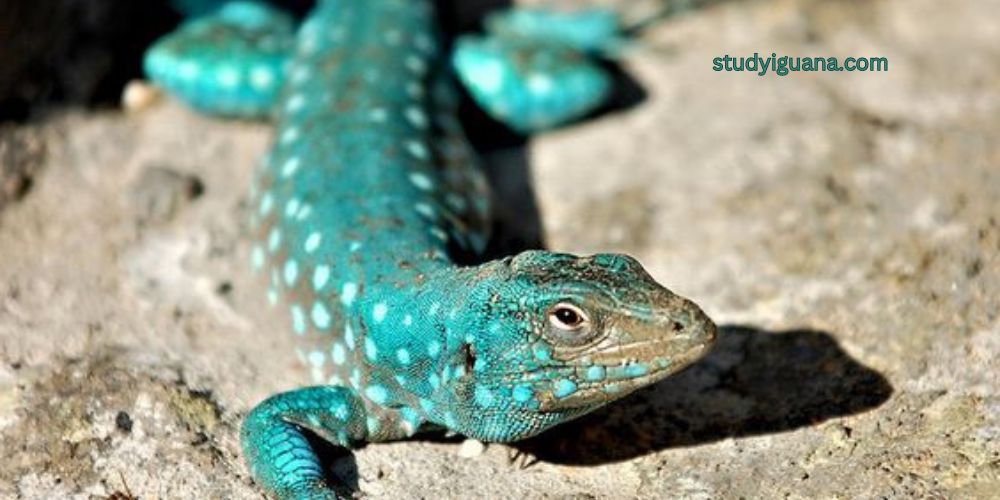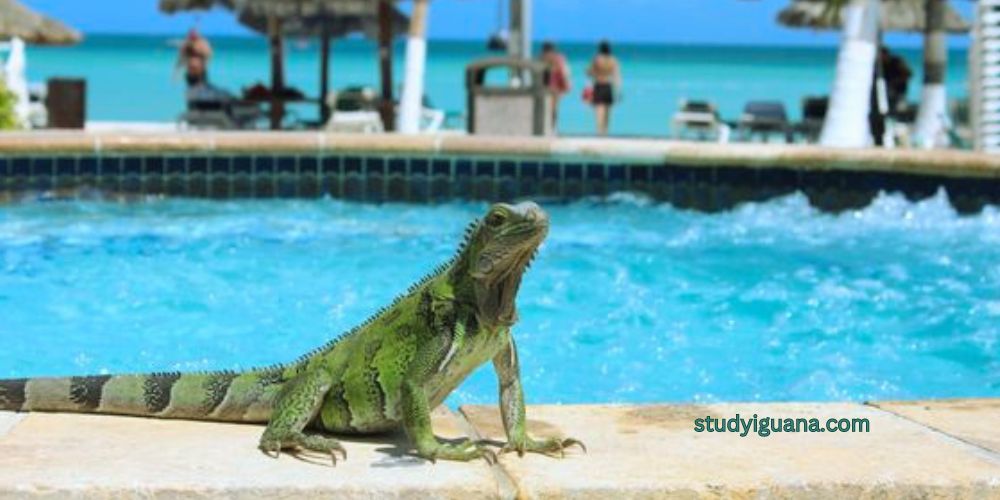Are there iguanas in Aruba? Yes, there are iguanas in Aruba. Aruba is home to the Aruban whiptail lizard, which is a type of iguana. These iguanas are commonly found on the island and are protected by law to ensure their conservation. They are often seen in various natural habitats, including coastal areas, rocky terrain, and even in some urban environments. Aruba takes measures to protect its native wildlife, including iguanas, so it’s important to respect their natural habitat when visiting the island.
A brief overview of Aruba
Aruba, with its beautiful beaches, warm climate, and vibrant tourism industry, is a well-known Caribbean island nation. Aruba is part of the Kingdom of the Netherlands, located in the southern Caribbean Sea, and has a diverse culture. ONE may ask, Are there iguanas in Aruba?
Introduction to the presence of iguanas in Aruba
The answer to this question , ” Are there iguanas in Aruba?” So the answer is presence of iguanas in Aruba is a fascinating aspect of the island’s biodiversity. Aruba is home to the Aruban whiptail lizard, a native iguana species that contributes to the unique ecosystem of this Caribbean destination. In various natural settings, tourists can spot these iguanas, adding intrigue to Aruba’s wildlife. This introduction sets the stage for a closer exploration of these fascinating creatures and their significance in Aruba.
The importance of protecting iguanas and their habitat
Protecting iguanas and their habitat is crucial for preserving Aruba’s ecological balance and safeguarding its unique biodiversity. It also ensures the sustainability of Aruba’s tourism industry, which relies on the island’s natural beauty and wildlife.
Are there iguanas in Aruba? Species of Iguanas in Aruba
The Aruban whiptail lizard is the primary iguana species in Aruba, known for its unique characteristics and wide habitat range.

Aruban whiptail lizard
The Aruban whiptail lizard (Cnemidophorus arubensis), found exclusively on the island of Aruba in the Caribbean, possesses a distinctive appearance and behavior, rendering it a unique and vital component of the island’s ecosystem.
Characteristics and features of the Aruban whiptail lizard
The Aruban whiptail lizard is a fascinating species with several distinctive characteristics and features:
Size: They are relatively small, with adults typically measuring between 8 and 10 inches in length.
Coloration: These lizards often have a brownish-gray or greenish-brown coloration with dark stripes or patterns running along their bodies.
Tail: One of their defining features is their long, slender tail, which can be up to twice the length of their body. This tail aids in balance and locomotion.
Limbs: They have well-developed limbs with sharp claws, which they use for digging and climbing.
Diet: Aruban whiptail lizards are primarily insectivorous, feeding on a diet of small insects and arthropods.
Behavior: They are diurnal, meaning they are active during the daytime. They often bask in the sun to regulate their body temperature.
Reproduction: Aruban whiptail lizards reproduce through parthenogenesis, a form of asexual reproduction where females can produce offspring without mating with males. This unique reproductive strategy is a topic of scientific interest.
Habitat: They exhibit adaptability and can inhabit various habitats on Aruba, including coastal areas, rocky terrain, and arid landscapes.
Conservation Status: Due to their limited distribution, Aruban whiptail lizards are a protected species on the island to ensure their conservation.
These characteristics and features make the Aruban whiptail lizard an interesting and important part of Aruba’s wildlife.
Distribution and habitat preferences
The Aruban whiptail lizard has a specific distribution and habitat preference on the island of Aruba.
Endemic to Aruba: These lizards are endemic to Aruba, which means they are found exclusively on this Caribbean island and nowhere else in the world.
Wide Habitat Range: Aruban whiptail lizards are highly adaptable and can be found in various habitats across the island, including coastal areas, rocky outcrops, sandy plains, and even in some urban environments.
Coastal Areas: They are often observed in coastal regions, including beaches and dunes, where they bask in the sun and seek refuge in rock crevices.
Rocky Terrain: These lizards are well-suited for rocky terrains and can frequently be seen climbing or hiding among rocks and boulders.
Arid Landscapes: Aruban whiptail lizards are well adapted to Aruba’s arid climate, and they are commonly found in arid, desert-like landscapes, where they forage for insects.
Urban Environments: In some cases, they have adapted to urban environments and can be spotted in gardens, parks, and even around human settlements.
Their ability to thrive in diverse habitats on the island highlights their resilience and adaptability, making them a fascinating subject for ecological study and conservation efforts.
Conservation Efforts
Conservation efforts for the Aruban whiptail lizard include legal protections and habitat preservation to ensure their survival and biodiversity conservation on Aruba.
Legal protection of iguanas in Aruba
Local wildlife laws and regulations protect iguanas in Aruba, including the Aruban whiptail lizard. These laws prohibit the capture, harm, or trade of these lizards and their habitats, aiming to safeguard their existence on the island. Violators may face penalties to enforce these protections, reinforcing the commitment to conservation.
Conservation organizations and initiatives
Several conservation organizations and initiatives contribute to the protection of iguanas and biodiversity in Aruba.
Aruba National Park Foundation (FPNA): FPNA manages Arikok National Park, which is a crucial habitat for Aruban whiptail lizards and other native species. They focus on habitat restoration and public education.
Aruba Nature Conservation: Dedicated to preserving Aruba’s natural environment, this nonprofit organization focuses on conserving native flora and fauna, which encompasses iguanas.
International Union for Conservation of Nature (IUCN): The IUCN collaborates with local organizations to assess the conservation status of Aruban wildlife, including iguanas, and recommend conservation strategies.
Research and Monitoring: Scientists and researchers conduct studies on iguanas and their habitats to gather data for informed conservation decisions and strategies.
Public Awareness: Various educational programs and initiatives raise awareness about the importance of conserving iguanas and the unique biodiversity of Aruba.
These organizations and efforts play a vital role in ensuring the long-term survival and well-being of iguanas and other native species in Aruba.
Challenges facing iguana conservation in Aruba
Iguana conservation in Aruba faces challenges like habitat destruction due to urbanization, invasive species, and climate change impacts. Human disturbances and road mortality also threaten their survival. Additionally, illegal capture and trade persist as significant concerns.

Are there iguanas in Aruba? And Their Interactions with Humans
Iguanas in Aruba often interact with humans, particularly in tourist areas. Tourists can observe them in natural habitats, but it’s essential to maintain a respectful distance to avoid stressing the animals. Responsible tourism practices help ensure these interactions are positive for both humans and iguanas.
Where and how iguanas are commonly observed by tourists
Tourists commonly observe iguanas in Aruba at Arikok National Park, on beaches, and in rocky terrain. You can observe them basking, climbing, or in urban areas, but it’s crucial to maintain a respectful distance.
Guidelines for responsible iguana viewing
Maintain Distance
Observe iguanas from a respectful distance to avoid causing stress or disturbance.
No Feeding
Refrain from feeding them, as human food can be harmful to their health and disrupt their natural diet.
Avoid Touching
Never attempt to touch or handle iguanas, as they may bite or scratch when feeling threatened.
Stay on Trails
Stick to designated trails and paths in natural areas to minimize habitat disturbance.
No Littering
Dispose of trash properly to keep their habitats clean and free from pollution.
Educate Others
Share responsible viewing guidelines with fellow tourists to promote awareness and conservation efforts.
Benefits and concerns of iguanas in urban environments
Benefits of iguanas in urban environments:
Biodiversity: Iguanas contribute to urban biodiversity, enhancing the natural appeal of cities and providing educational opportunities.
Pest Control: They help control insect populations, serving as natural pest managers in gardens and parks.
Tourism: Urban iguanas can attract eco-tourists interested in wildlife observation.
Concerns about iguanas in urban environments:
Human-Iguana Conflict: Iguanas may damage gardens and property, leading to conflicts with residents.
Traffic Hazards: They can pose road hazards when crossing streets, endangering both iguanas and motorists.
Health Risks: Iguanas can carry diseases, potentially posing health risks to humans and other animals.
Balancing these benefits and concerns requires responsible urban planning and management to coexist harmoniously with iguana populations.
Conclusion
Are there iguanas in Aruba?
In conclusion, iguanas, particularly the Aruban whiptail lizard, are an integral part of Aruba’s unique biodiversity. While they offer benefits like biodiversity enhancement and natural pest control in urban environments, challenges such as habitat loss and human interaction necessitate responsible conservation efforts.
FAQS
Where can I see iguanas in Aruba?
You can see iguanas in Aruba at Arikok National Park, beaches, rocky terrain, and even some urban areas, but remember to observe them respectfully.
Are iguanas protected in Aruba?
Aruba protects iguanas, including the Aruban whiptail lizard, through wildlife laws to ensure their conservation and well-being.
How big are iguanas in Aruba?
Iguanas in Aruba, particularly the Aruban whiptail lizard, are relatively small. Adult individuals typically measure between 8 and 10 inches (20 and 25 centimeters) in length, excluding their long tail, which can be up to twice the length of their body.
How long do iguanas live in Aruba?
Iguanas in Aruba, including the Aruban whiptail lizard, typically have a lifespan of around 5 to 10 years in the wild. However, their longevity can vary depending on factors such as predation, habitat quality, and environmental conditions.
Why are iguanas endangered in Aruba?
Iguanas in Aruba, including the Aruban whiptail lizard, are not currently classified as endangered. However, they face threats such as habitat loss and invasive species that require conservation efforts to safeguard their populations.
Additional readings
